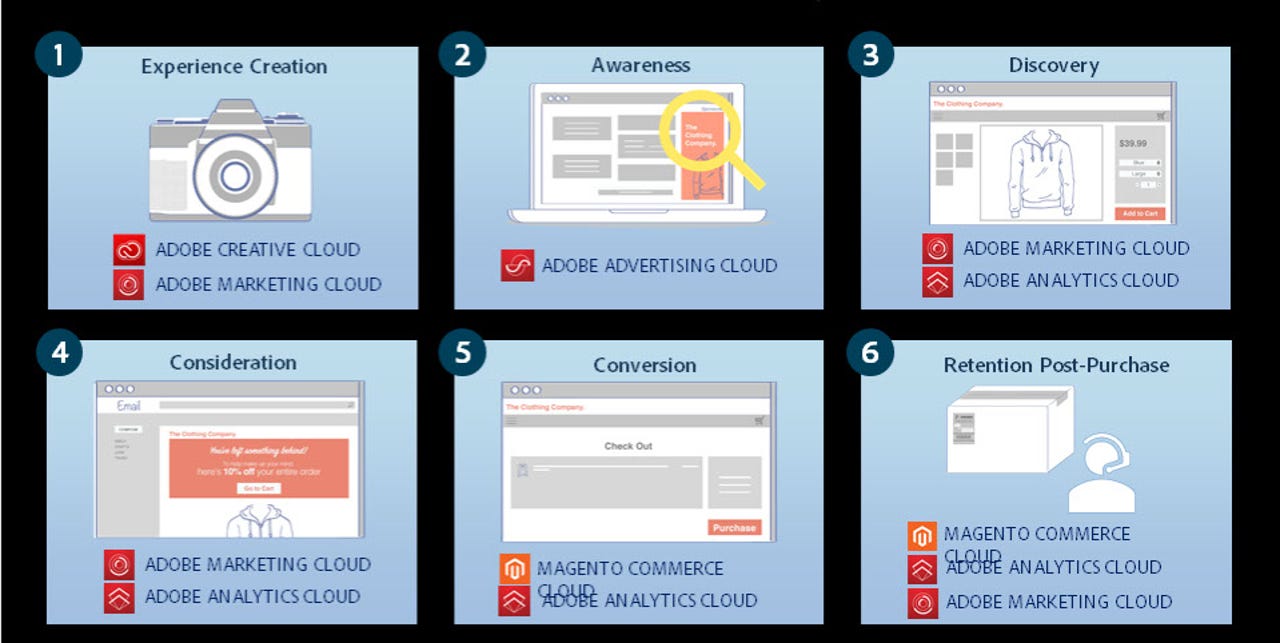Together, Adobe and Magento go after SMBs and enterprise


Adobe says the Experience Cloud handles every "consumer touchpoint"
With Adobe's $1.6 billion acquisition of Magento complete, the two companies on Tuesday are rolling out a significant integration, as well as a series of new Magento products. The announcements shed light on how Adobe plans to use Magento to move further into the SMB market, and how Adobe can help accelerate Magento's push into enterprise.
First, Adobe is integrating its Experience Cloud and the Magento Commerce Cloud. The integration fulfills the promise of the acquisition -- to flesh out Adobe's customer experience tools, adding a commerce platform to its content creation, marketing, advertising and analytics products. The integration will bring the Magento platform to more enterprise customers, helping brands connect with customers at every step of the "customer journey."
Next, Magento is rolling out a major update to its platform with capabilities designed for SMBs. The updates can also help introduce those companies to the rest of the Adobe portfolio. They could also apply to smaller initiatives within a larger organization.
Adobe is "the only provider that can offer an end-to-end solution, from creating rich experiences to advertising, reaching out and attracting the right guests... all the way through the ownership experience," Errol Denger, Adobe's director of Commerce strategy, told ZDNet. On top of that, he argued, "We're the only firm that can help small companies, or within large companies, emerging brands... new initiatives that very large brands want to bring online quickly."
One of the big selling points of the integration of the Adobe Experience Cloud and the Magento Commerce Cloud, Denger said, will be the ability to create "shoppable" experiences. In other words, he said, it's "making content a transactional opportunity" -- such as interactive video content that facilitates purchases.
So for instance, a retail brand could use Adobe's content tools to complement an in-store runway show with digital content -- like a simulcast of the event to in-store screens at other locations, as well as a recording that could be sent to customer's mobile devices. Customers could shop the show through that content.
Creating a rich customer experience is "driving growth in commerce across all industries," including areas like manufacturing and distribution, according to Peter Sheldon, VP of strategy for Magento. "We see this trend across the board," he said, in both B2C and B2B markets.
Meanwhile, the updates to the Magento platform include tools for merchants and developers like a new PageBuilder for drag-and-drop site content editing, as well as the new Magento Progressive Web Applications (PWA) Studio for building impactful mobile experiences. "We strongly believe this will have a huge impact on our merchants' growth," Sheldon said of the PWAs.
It also includes Magento Payments, so merchants can instantly accept payments from customers, as well as an integration with Amazon Sales Channel. Along with integrations with Google Merchant Center and Advertising Channels for Google Smart Shopping Campaigns, this enables merchants to easily sync Magento stores across channels.